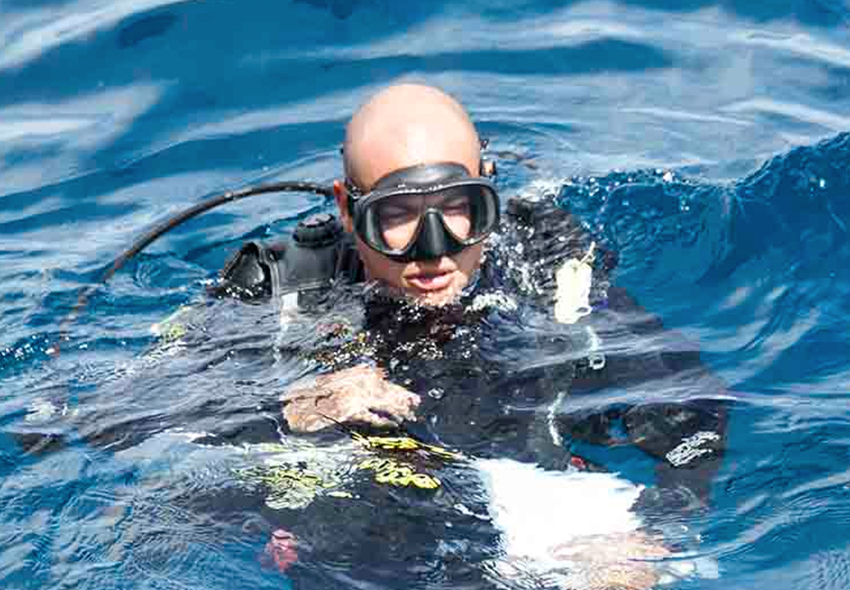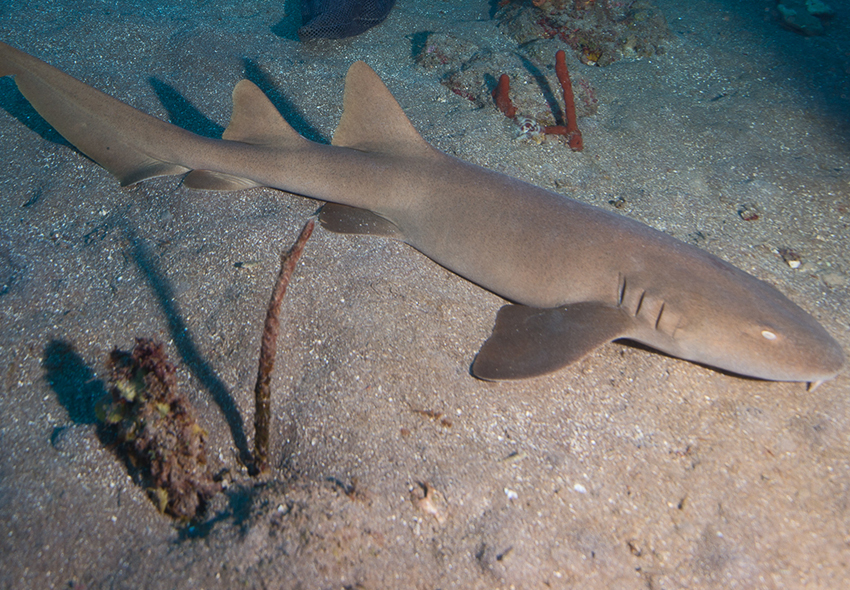Sharks on the Saba Bank
Friday 30 October 2015, I am typing this blog entry on a live-aboard dive boat that for two weeks has been transformed into a bonafide research expedition ship. Ordinarily I am manager of the St. Maarten Nature Foundation, which is the organization that manages the Man of War Shoal Marine Protected Area on Sint Maarten. But for the past three days and for the next three days to come myself and sixteen of my colleagues are inventorizing and mapping one of the world’s largest submerged coral atolls, the Saba Bank.
My specific job, together with my colleagues Ingrid van Beek of IMARES and Steve Piontek of the Statia Fisheries Department, is to conduct underwater fish transacts, which is a fancy word for doing fish counts along a fifty-meter length of tape at various depths and at various locations on the Saba Bank. We look for various species ranging from conch to grouper, snapper to damsel fish and from chromis to what is undoubtedly everyone’s favorite: sharks.The presence and management of sharks on the Saba Bank is of close personal importance to me: I am also chair of the Dutch Caribbean Nature Alliance Shark Project which, with the support of the Dutch National Postcode Lottery, has embarked on conserving sharks on all six islands of the Dutch Caribbean.
On the 1st of September 2015 Dutch State Secretary Sharon Dijksma declared the EEZ of Bonaire and Saba, which includes the Saba Bank, as a shark and marine mammal sanctuary. The area, called the Yarari Sanctuary after the Arawak Indian word for a ‘fine place’, is committed to the effective protection of sharks and rays on the Saba Bank and during this expedition we have seen no shortage of them. On almost every dive we’ve had them come to check out what we were doing in their underwater kingdom.
But there is still work to do. During some monitoring dives we noticed sharks caught in lobster and fish traps, reinforcing the need to work with local stakeholders, and especially with fishermen, in ensuring that these globally threatened animals are protected and conserved. It is now almost nine in the morning; time for the first dive of the day! The weather has been excellent with very calm conditions, unusual for the Saba Bank. We are all excited and ready to do our science and to record very important data on fish populations. And there is no better place I would rather be than right here with my fellow researchers and the excellent crew of the Caribbean Explorer, getting to know this beautiful and mythical part of the Caribbean Sea; the Saba Bank.
EXPEDITION SABA BANK II
OCT - NOV 2015

TADZIO BERVOETS
ST. MAARTEN NATURE FOUNDATION


